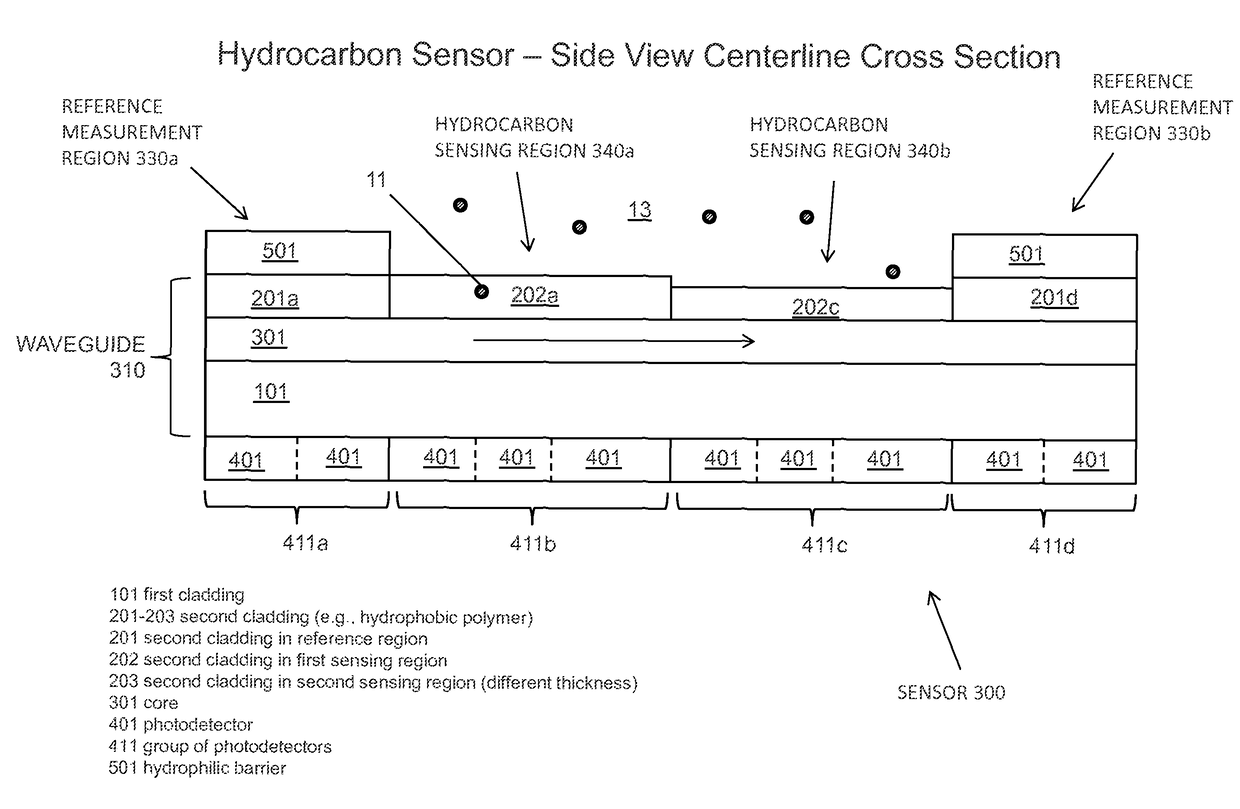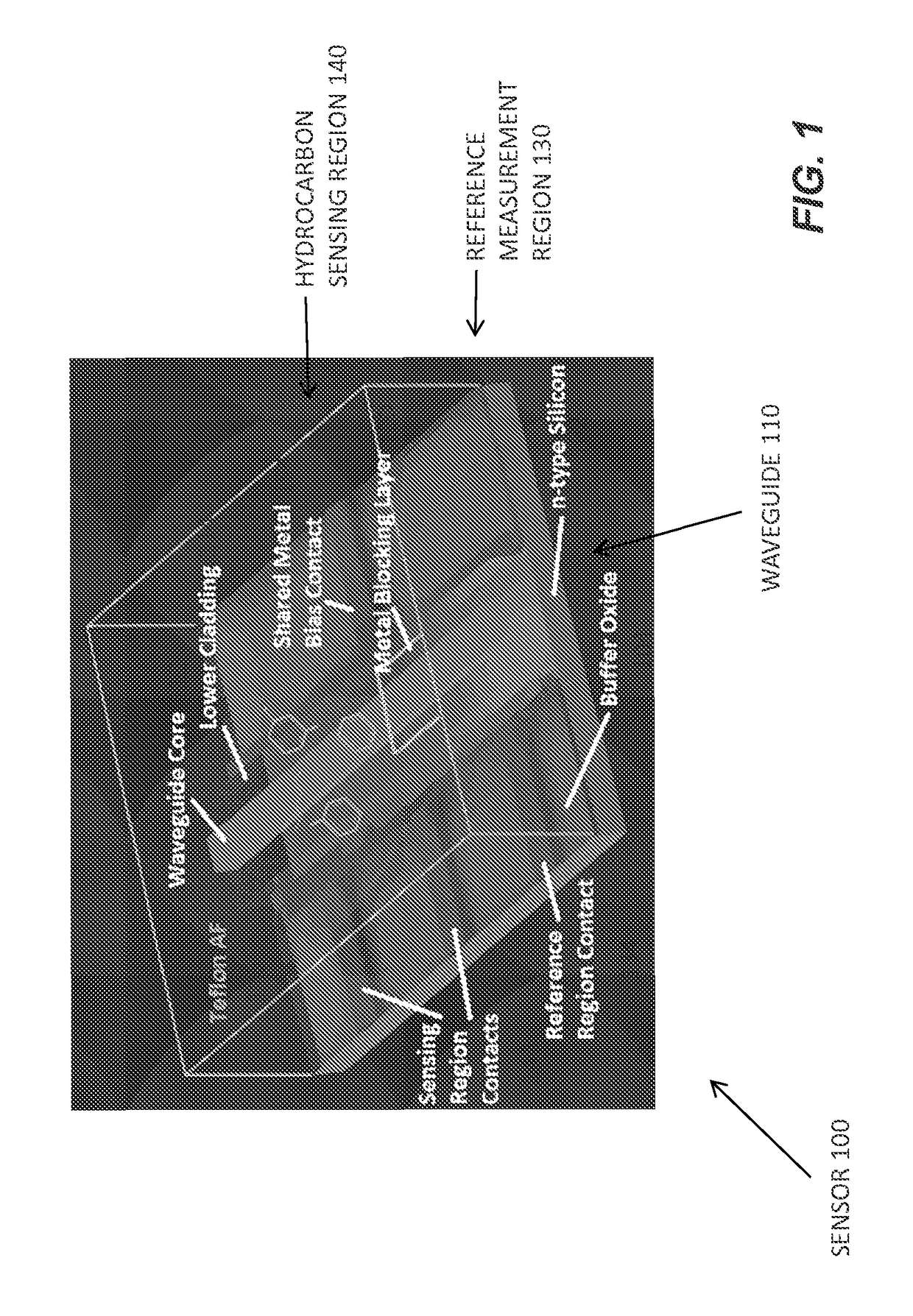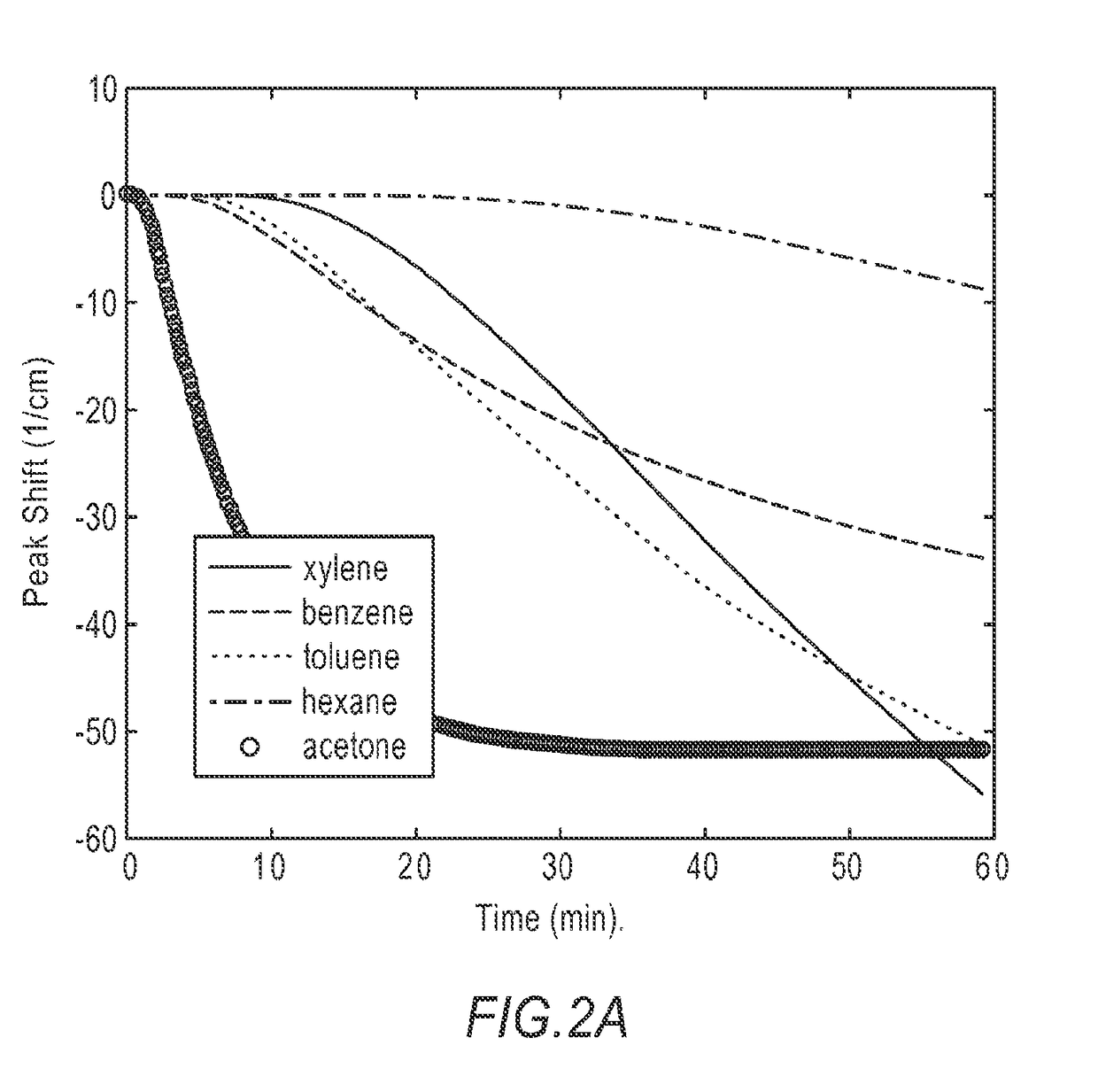Hydrocarbon sensing methods and apparatus
- Summary
- Abstract
- Description
- Claims
- Application Information
AI Technical Summary
Benefits of technology
Problems solved by technology
Method used
Image
Examples
Embodiment Construction
[0030]Embodiments of the present invention relate to sensing of impurities or contaminants in impure mixtures using one or more materials whose optical properties change when exposed to the contaminants. An example of such a mixture of interest is aromatic hydrocarbon contamination dissolved in water. In some embodiments, the materials concentrate the impurities, and in some embodiments the surface of the materials exposed to the impure mixtures is textured to enhance the concentration of impurities. Optical properties of the materials of primary interest include refractive index and absorption. Appropriate optical sensing architectures include those that transduce a change in refractive index to a change in photocurrent of one or more photodetectors as a result of a change in the optical power intercepted by those photodetectors.
[0031]For some applications, compactness of the sensor is an advantage, and in such cases miniature optical waveguide sensors are attractive solutions. Opt...
PUM
 Login to View More
Login to View More Abstract
Description
Claims
Application Information
 Login to View More
Login to View More - R&D
- Intellectual Property
- Life Sciences
- Materials
- Tech Scout
- Unparalleled Data Quality
- Higher Quality Content
- 60% Fewer Hallucinations
Browse by: Latest US Patents, China's latest patents, Technical Efficacy Thesaurus, Application Domain, Technology Topic, Popular Technical Reports.
© 2025 PatSnap. All rights reserved.Legal|Privacy policy|Modern Slavery Act Transparency Statement|Sitemap|About US| Contact US: help@patsnap.com



